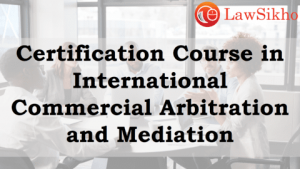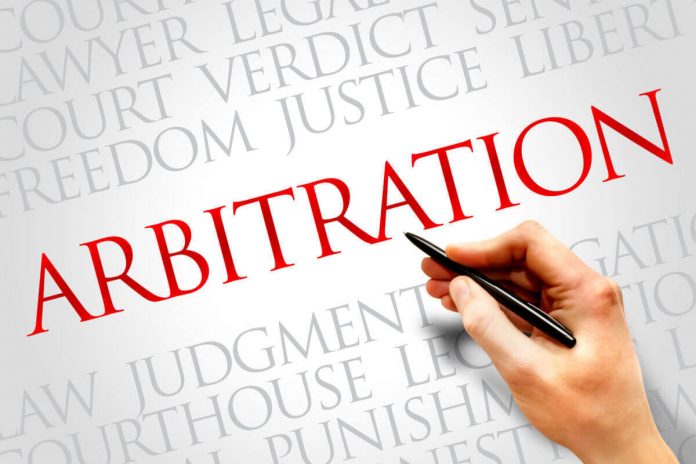This article has been written by Achal Jain, pursuing a Certificate Course in International Commercial Arbitration and Mediation from LawSikho.
Table of Contents
Introduction
Cost allocation in International Arbitration and International Commercial Arbitration is a crucial concern for the disputed parties participating in arbitration. It has also been a controversial topic among scholars and practitioners. Resolving an International Commercial Arbitration dispute is an expensive affair for various reasons. Such disputes involve high-risk, technical, or complex questions related to issues that ultimately lead to highly expensive legal and other professional fees. Additionally, as parties to the dispute have chosen a private or independent means of dispute resolution, they will also have to bear the fees and expenses of the arbitrators. The cost associated with the dispute resolved by arbitration comes under various heads such as procedural fees which may be the fees and expenses of arbitrators and administrative expenses which are generally fixed by the arbitral institution providing a mechanism for the disposal of a dispute between the parties. The overall costs of arbitration comprise hiring appropriate facilities, transcription services, and hiring of interpreters according to the needs also must be met. Resultantly, the costs of international commercial arbitration are quite high depending upon expenses incurred at a party’s presentation of its issues and case for the perusal of the arbitral tribunal. 
Methods of cost allocation
Looking at cost allocation, International Commercial Arbitration practice provides broad flexibility in terms of cost allocation. Since there is no uniform approach for dividing the costs of arbitration among the parties to the dispute; the preference of arbitral tribunals is differing or varying in this practice. However, this difference appears to create indifference in the allocation of cost. Some approaches that have gained wide acceptance by arbitration practitioners are assuming that unsuccessful parties will bear the cost and it is also considered as an American Rule.
- Cost following the event
In this method, it is followed that the party who lost the arbitration will bear the cost and fees of the arbitration. This method includes awarding of costs incurred and fees paid in arbitration. Thus, the party who has won the arbitration gets full indemnification of all the legal costs incurred by them. The above-mentioned approach was first developed in the English court system, and it has spread to many other jurisdictions of common law. In a survey which was done by few arbitral institutions on preferred practice in commercial arbitration where it was noted that, in 50% of the awards rendered, the arbitral tribunals used the Costs Follow the Event principle for allocation of the costs in arbitration. It has also been noted that the method of ‘Costs Follow the Event’ is the most preferred among the tribunals.
Arbitration ensures that the winning party is indemnified against the expenses incurred and it is to be borne by the losing party. This advantageous position refrains the parties from pursuing unwanted and unnecessary litigation. Nonetheless, it must be noted that in the last few years, before applying any approach as to the allocation of the costs in arbitration, the arbitral tribunal includes a few considerations, such as the intent and conduct of the parties in the proceedings and relative success in arbitration. Moreover, the arbitral tribunals tend to follow other methods, for instance, apportioning of costs between the parties.
2. Apportioning of costs between the parties
This is one of the most followed approaches by the arbitral tribunals; it is also known as the outcome-based approach. As per this method, the parties incur the costs in accordance with actual success parties have gained based on merits. This model provides the arbitral tribunal with the discretion to share out or apportion the costs and fees incurred between the parties to the dispute if it deems fit to do so. This method gives the arbitral tribunal the flexibility and ease to depart or withdraw from the application of Costs Follow the Event approach if the circumstances enable apportionment.
A survey was done where it was noted that the arbitral tribunals incorporated the method of Apportioning of Costs between the parties in 30% of the arbitral awards reviewed. Thus, it is the second-favored method of allocation of costs among other methods. Resultantly, it is claimed that this method provides more equitable results- Considering that sometimes it is very difficult to detect who is “the actual winner” at the stage of rendering the final award in arbitration. However, the approach of proportional allocation allows the arbitral tribunals to decide for parties to pay the costs on each and every individual claim or defense raised by them.
In Sylvania Technical System, Inc. v. The Government of the Islamic Republic of Iran, an opinion was given in the arbitral award rendered where it explained some circumstances that may be suitable for an arbitral tribunal to apportion costs between the parties such as:
When one party wins a claim and the other party wins a counterclaim made by it, apportionment is warranted in such a case. Likewise, there are some cases that involve separate and independent causes of action, such as in a case where a contractor submits claims under two independent contracts involving distinct building projects. If at the end of the arbitration such a claimant got an award in his favor as to one project but lost as to another project, in such a situation an apportionment of costs of the total legal fees incurred by parties should be appropriated.
The tribunals that follow this approach emphasize that in a scenario where the monetary results do not reflect the actuality of the merits, the “Apportioning of Costs between the parties” appears to be more practical. However, in contrast, this approach is often criticized when it is applied with an inflexible mathematical approach, as it fails to clear the test of fairness in cases where some parties claim unjustified or vexatious legal costs with significant inconsistency.
3. American rule
This is the last approach towards the allocation of costs which is known as American Rule, which lays down equal share for the procedural costs, while the remaining costs are to be borne by the party who incurred the cost, except any statute or an agreement between the parties regulates the opposite. Therefore, this American Rule approach is distinct from other methods, this method is outcome-neutral.
The American Rule approach has been maintained in the legal system of America which derives from English Common Law, while at the same time England has progressed towards the Costs Follow the Event Method.
The tribunals of this approach clarify that it encourages good and promising claims and at the same time it lowers the barriers to arbitrate, since in this approach the parties bear the risk related to the cost they have incurred, presuming the higher risks that may be faced by the parties while applying the outcome-based method.
4. Departing from cost allocation methods for specific reasons
In some cases, there arise specific situations wherein the arbitral tribunals have to depart their way from a given model of allocation of the costs for “specific reasons”. Specific reasons may cover punishing for wrongful conduct or preventing undue hardship. This model equips the arbitral tribunals with the flexibility to depart from its provisions for awarding costs for “specific reasons”. There may be a situation when a party does not possess sufficient financial resources and has to resort to international arbitration due to the terms and conditions of the contract signed with the respondent to settle a dispute. This party may not succeed on its claim but nonetheless raise claims on an adequate legal basis involving unsettled questions of law.
Nevertheless, the “specific reasons” contained in this method may also be invoked in exceptional cases where a party has acted with malafide intention or has engaged in other misconduct. This exception to the costs, follows the event method that has been followed by ICC in various cases such as:
In Final Award No. 6527, an ICC panel of arbitrators deduced that the respondent had acted in bad faith when he had wrongfully withdrawn himself from a contract with the claimant. Thus, the panel declined the claimant’s claim for costs and attorneys’ legal fees because the claimant had claimed for unreasonable and excessive compensation.
ICC report on costs in International Commercial Arbitration
In 2015, a report was published by the International Chamber of Commerce (ICC) Commission on “Decisions on Costs in International Arbitration”. This report reviewed and considered all the cost decisions rendered in ICC awards from 2008 to December 2014 and it also drew on contributions from eight other arbitral institutions.
In ICC’s report, it was observed that a majority of tribunals chose to adopt the recovery of costs by the successful party approach, adjusting the allocation of costs as appropriate, depending upon various kinds of factors. The aforementioned approach was followed by many tribunals in the majority of ICC awards that were examined i.e. in 91% of HKIAC awards, in 90% of SIAC awards, and in the majority of ICDR awards, and in more than half of the SCC awards. Moreover, the same was noticed in most of the awards rendered by LCIA and PCA.
Conclusion
Parties decide to resolve their dispute through arbitration over litigation as it is one of the most cost-effective mechanisms for dispute resolution, but nevertheless, the parties sometimes have to bear unreasonable costs by the end of the arbitration process.
It is widely noticed that in most of the common law jurisdictions, the Costs Follows the Event principle has been adopted which implies that the losing party will bear the costs and fees of arbitration. However, there is no concurrence that what costs may be awarded to the winning party and if or how costs of arbitration should be apportioned when a party only partially wins arbitration. Moreover, there is no uniform or fixed approach to deciding the claims made for costs and fees incurred by parties. Tribunals tend to resolve a claim made for costs and fees by incorporating one of a variety of laws, rules, and principles available. This technique has resulted in awards being inconsistent, arbitrary, and difficult to predict. The American Rule reduces concerns of the parties related to costs and fees who are willing to arbitrate while the method of Apportioning costs between the parties can prove a better conclusion as to who is the actual winner at the end of the arbitration.
References
- Ezgi Babur von Schwander, “Costs and Reduction of Costs in Arbitration“, Erdem & Erdem Newsletter July 2017, available at: http://www.erdem-erdem.av.tr/publications/newsletter/costs-and-reduction-of-costs-in-arbitration/.
- https://repository.law.umich.edu/cgi/viewcontent.cgi?article=1380&context=mjil.
- https://www.mondaq.com/turkey/arbitration-dispute-resolution/679932/cost-allocation-in-international-arbitration.
- Queen Mary University and White & Case, “2012 International Arbitration Survey: Current and Preferred Practices in the Arbitral Process”, p. 40-41, available at: http://www.arbitration.qmul.ac.uk/docs/164483.pdf.
- https://www.kwm.com/en/knowledge/insights/costs-in-international-arbitration-20180412.
Students of Lawsikho courses regularly produce writing assignments and work on practical exercises as a part of their coursework and develop themselves in real-life practical skills.
LawSikho has created a telegram group for exchanging legal knowledge, referrals, and various opportunities. You can click on this link and join:
 Serato DJ Crack 2025Serato DJ PRO Crack
Serato DJ Crack 2025Serato DJ PRO Crack










 Allow notifications
Allow notifications



